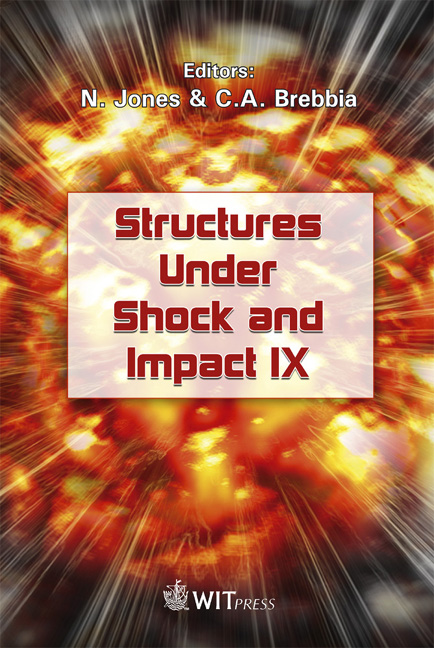The Behavior Of Elastomers At High Strain Rates
Price
Free (open access)
Transaction
Volume
87
Pages
10
Published
2006
Size
420 kb
Paper DOI
10.2495/SU060101
Copyright
WIT Press
Author(s)
M. S. Hoo Fatt & X. Ouyang
Abstract
Tensile impact experiments were performed to obtain stress-extension ratio curves of uniaxial strip specimens and dynamic force-extension curves of thin rubber sheets at impact rates of loading. Results from the uniaxial tension tests indicated that although the rubber became stiffer with increasing strain rate, the stress-extension ratio curves remained virtually the same above 280 s-1. Above this critical strain rate, strength, fracture strain and toughness decreased with increasing strain rate. When strain rates were below 180 s-1, the initial modulus, tensile strength and breaking extension increased as the strain rate increased. Between strain rates of 180 s-1and 280 s-1, the initial modulus and tensile strength increased with increasing strain rate but the extension at break decreased with increasing strain rate. A hyper-viscoelastic constitutive relation of integral form was used to describe the rate-dependent material behavior of the rubber. The proposed constitutive equation was implemented in ABAQUS Explicit via a user-defined subroutine and used to predict the dynamic response of the rubber sheets in the experiments. Numerical predictions for the transient deformation and failure of the rubber sheet were within 10% of experimental results. Keywords: elastomers, high strain rates, hyper-viscoelastic constitutive equation, finite element analysis. 1 Introduction Elastomers or rubber-like materials are often used to mitigate damage caused by impulsive or impact loads because of their low modulus, high damping and large breaking extension. Rubber isolation bearings, for example, protect buildings and bridges from earthquakes by imposing a layer of low shear modulus between the structure and ground thereby allowing lateral, almost rigid body motion of the structure. Rubber shock absorbers arrest impacting bodies with minimum
Keywords
elastomers, high strain rates, hyper-viscoelastic constitutive equation, finite element analysis.





